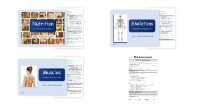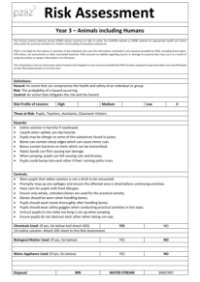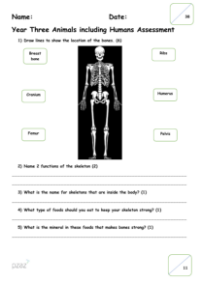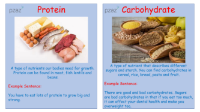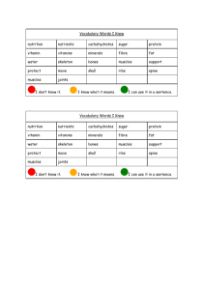Animals including Humans - Answers

Science Resource Description
In a set of answers for a Year Three lesson on Animals including Humans, students are guided through various questions aimed at understanding the human skeleton and nutrition. Initially, they are tasked with identifying the locations of bones within the body, followed by naming two functions of the skeleton, such as protection and movement, with additional functions like nutrient storage, support, and blood cell production being acceptable answers. The term 'endoskeleton' is introduced to describe skeletons that are located inside the body.
The lesson continues with nutritional advice, suggesting dairy as a source of food to maintain a strong skeleton, highlighting calcium as the key mineral responsible for bone strength. Students then explore the different types of skeletons in animals, identifying the advantages and disadvantages of having an endoskeleton. The importance of a balanced diet is underscored through questions about the main nutrient group in rice (carbohydrates), protein-rich foods (meat, fish, pulses), and sources of vitamins and minerals (fruits and vegetables). Health problems associated with excessive saturated fat consumption, such as obesity and heart issues, are also addressed. The lesson concludes with a focus on the human muscular system, explaining voluntary and involuntary muscle movements and the roles of different muscles during activities such as arm movement.

